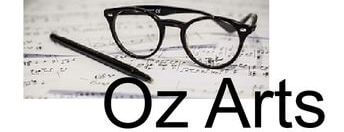W.A.Opera Company
His Majesty’s Theatre
reviewed by Neville Cohn
In recent years, there has been a remarkable flowering of vocal talent in Western Australia and evidence of this was glowingly apparent in a production of Mozart’s timeless masterpiece which opened to a capacity house for a short season on Tuesday.
A trio of young female singers brought more than a touch of distinction to a production that was as easy on the eye
as the ear.
Rachelle Durkin, with the benefit of experience recently gained in New York, improves with every appearance. Admirably secure at all points of the range – and producing a stream of finely pitched sound that projected effortlessly into the auditorium – this soprano gave incontrovertible evidence of dramatic ability which must surely silence those doubters who, at one time or another, have suggested that Durkin is largely limited to comic roles.
True, she has a marked affinity for comedy but it became abundantly clear in her performance as Donna Anna that Durkin has the ability to adapt chameleon-like to the subtle darkness of the role of a woman profoundly wronged by the caddish Don. Her burning desire for vengeance – the Don has killed her father in a duel heavily weighted in favour of the appalling philanderer – was most impressively conveyed in an in-depth portrayal that augurs well for a career in one of music’s most toughly competitive areas.
Durkin was a sumptuously gowned figure as was Caitlin Hulcup, as Donna Elvira, a vision in scarlet as she made her first entrance alighting from a sedan chair. I cannot recall hearing this young mezzo soprano to better advantage. Her astonishment that metamorphoses to fury as the Don’s modus operandi as a human tomcat on heat becomes apparent was as convincing as her steadily increasing vocal control. She, too, brought strong stage presence to the production.
As well, soprano Penelope Reynolds, who scored a great success earlier this year as Papagena at an open air performance of The Magic Flute, did well as Zerlina, the simple country maiden torn between her love for Masetto (Peter Axford) and the difficult-to-resist charms of the wily Don.
Nothing so emphasises the worth of the WAOC’s Young Artist Programme as the quality, in this production, of up-and-coming singers who have taken part in the Programme.
From his first entrance, sans trousers, as he climbs a ladder to get into Donna Anna’s bedroom, Douglas McNicol was the Don to a ‘t’. Lecherous, constantly on the make, callously indifferent to anyone’s feelings other than his own, McNicol conveyed all these characteristics through a gesture here, a knowing, come-hither smile there, as well as a voice that impressed at every turn.
As the long suffering Leporello, the Don’s hapless manservant, Conal Coad milked the role for most of its comic potential, notably in the famous ‘catalogue aria’ which he seemed positively to relish singing. In the famous aria where Leporello lists his master’s innumerable conquests, Coad was in excellent fettle as were the rushing strings of the accompanying orchestra.
There was some first rate ensemble singing: La ci darem la mano, that most famous of Mozartean duets, was touchingly essayed by Penelope Reynolds and McNicol – and there was more agreeable ensemble singing later in Protegga, il giusto cielo. Here, Anna, Elvira and Don Ottavio call for divine help to bring the lecherous Don Giovanni to book. Ottavio was sung with care and pleasing tone by Paul O’Neill.
On-stage action was finely lit by Nigel Levings.
Harpsichord accompaniments to the recitatives were a consistently stylish offering from Marilyn Phillips.
Simon Kenway presided over a reduced W.A. Symphony Orchestra which, for the most part, played with a will in the pit of HMT. Occasionally, though, synchronisation between orchestra and singers was less than ideal.
This Don Giovanni was made the more engrossing due to the skill with which director Julie Edwardson has contrasted the darker and the comic dimensions of the opera. It is an unusually well balanced production – and all the more satisfying for that. Bravo!
© 2005



